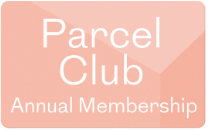What is Gestational Diabetes
Gestational diabetes mellitus (GDM) is a type of diabetes that develops or is first diagnosed during pregnancy. Simply put, it means that a woman has high blood sugars (hyperglycaemia) during pregnancy. It can also be defined as “glucose intolerance during pregnancy”.
What exactly does this mean?
When we eat carbohydrates, they are broken down into small glucose molecules and absorbed into our bloodstream. In response, we release a hormone called insulin which removes the glucose from our blood stream and takes it to where it is needed in our cells.
However, when we are pregnant, our placental hormones can "block" our insulin, preventing it from doing its job properly. This is known as insulin resistance. In a normal pregnancy, the body will combat this resistance by producing more insulin (about 2-3 times more than non pregnant women).
However, in some women, this adaptation doesn't go as planned, meaning women can't keep up with the higher insulin demand. This results in elevated blood sugars and a diagnosis of GDM. Once the baby is born, the placental hormones stop and your insulin and glucose metabolism will return to its pre-pregnant state.
If our body can’t overcome this, it results in elevated BGLs and a diagnosis of gestational diabetes.
Gestational diabetes is on the rise in Australia, estimated to affect around 16% of pregnancies. This is most likely due to our changing demographic - having babies at an older age, an increase in type 2 diabetes mellitus (T2DM), eating more processed foods and living a more sedentary lifestyle.
How can my diet help manage GDM?
The foods you eat have a big impact on your blood sugars. The goal is to keep your blood sugars in a normal range, not keep them entirely flat (a small rise in blood sugar after a meal is normal). Let’s break it down simply so you can understand…
-Foods that significantly raise your blood sugar - carbohydrates (quickly absorbed).
-Foods that do NOT significantly raise your blood sugar - proteins and fats (slowly absorbed).
Does this mean you should avoid carbohydrates? Absolutely not. Your body needs carbohydrates for fuel (especially in pregnancy). Instead, we need to learn how many carbohydrates our body can manage in a sitting, and pair them with protein and fat to slow overall absorption. When we slow absorption, we prevent a large glucose spike in our blood. Fibre will also help to slow absorption. It’s all about getting the right balance of nutrients.
Carbohydrates |
Proteins, fats and fibre |
|
GRAINS: Wholegrains (quinoa, buckwheat, brown rice, barely, oats), refined grains (white rice, white flour), bread, wraps, pasta, noodles, cereal, crackers, biscuits, cake |
PROTEINS: Meat, seafood/fish, poultry, eggs, nuts, seeds, bone broth |
|
STARCHY VEGETABLES: Potatoes, sweet potatoes, corn, pumpkin, and peas.
|
NON-STARCHY VEGETABLES: Tomato, capsicum, cucumber, eggplant, lettuce, spinach, zucchini, radish, snow peas, green beans, broccoli, cabbage, celery, cauliflower, mushroom, olives, spinach, kale, and herbs. |
|
LEGUMES: Chickpeas, beans, and lentils (these also contain protein). |
FATS: Butter, oils, avocado, and coconut products. |
|
FRUIT All fruit (fresh, dried or juiced) except those listed across. Berries are lower in carbs. |
FRUIT: Lemon, lime, and passionfruit
|
|
DAIRY: Milk, yoghurt, ice cream, custard (these also contain protein) |
DAIRY: Cream, cheese and butter. |
|
ADDED SUGAR: Honey, maple syrup, and coconut sugar. |
OTHER: Sweeteners (stick to natural sweeteners like stevia and monk fruit). |
Simple balanced meals and snacks for GDM

- Sourdough + avocado + sardines + hemp seeds
- Oats + chia seeds + almond milk + Greek yoghurt + grated apple
- Buckwheat cakes + cream cheese + salmon + cucumber + dill
- Greek yoghurt + keto granola + almond butter
- Smoothie with almond milk + berries + chia seeds + vanilla protein powder
- Bone broth + soba noodles + chicken + greens + tamari
- Chickpeas + salad + feta + olive oil + toasted sunflower seeds
- Wraps + avocado + eggs + salad + hemp seeds
- Nori + avocado + tuna + quinoa + mirin
- Sourdough pasta + tuna + zucchini + cheese + pine nuts
- Beef jerky + cheese + fruit
- Olives + cheese + seeded crackers
- Brazil nuts + dark chocolate
- Tortilla chips + guacamole + pumpkin seeds
- Dates + almond butter + cacao nibs
- Hot chocolate + full cream milk or soy milk
- Greek yoghurt + dark choc chips + shredded coconut
- Darl bars
- Protein balls
- Protein cookies
Other helpful tricks
- Pulse pasta is higher in protein and lower in carbohydrates than regular pasta, so you may find this helps your blood sugar.
- Sourdough pasta may also be better tolerated as it’s higher in protein too.
- Sauces are often hidden with lots of sugar, so be careful and read the ingredients. I often recommend the Undivided Food Co tomato and barbeque sauce because they have no added refined sugar and are lower in carbohydrates.
- Kelp noodles are very low in carbohydrates and may be a useful alternative to noodles depending on what other ingredients are going into your meal (remember you do not need to restrict your carbs too much)
- Protein powder is safe in pregnancy and can help balance out your meals. Protein powder adds protein to a meal without adding carbohydrates or fat. Unflavoured ones can be added to sweet or savoury food (like pumpkin soup), flavoured ones are best used in sweet foods (like smoothies and yoghurt).
- Drinking a glass of water with a tablespoon of apple cider vinegar before a main meal may reduce the glucose spike in your blood.
It is essential that all women who are diagnosed with GDM have a team of health professionals (including a dietitian) supporting them. Some women will be able to manage their blood sugars with diet and exercise, and others will need the assistance of insulin.
This is not a sign that you are doing anything wrong, just that your body needs a bit of extra help. With the right information and support, you can manage your GDM feeling empowered and in control.
Biography

Renee Jennings is a clinical dietitian (APD) and nutritionist who specialises in preconception, pregnancy and postpartum nutrition. She works in private practice and has a special interest in gestational diabetes, helping women manage this condition with a wholefoods approach.
She has a strong research foundation and is the author of Nurture the Seed: Your evidenced-based guide to prenatal nutrition.



